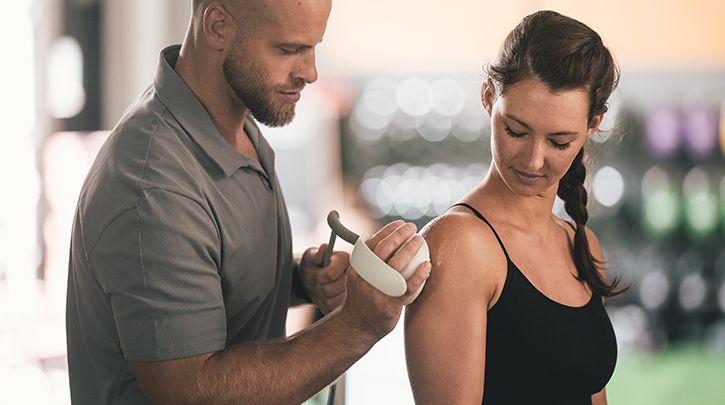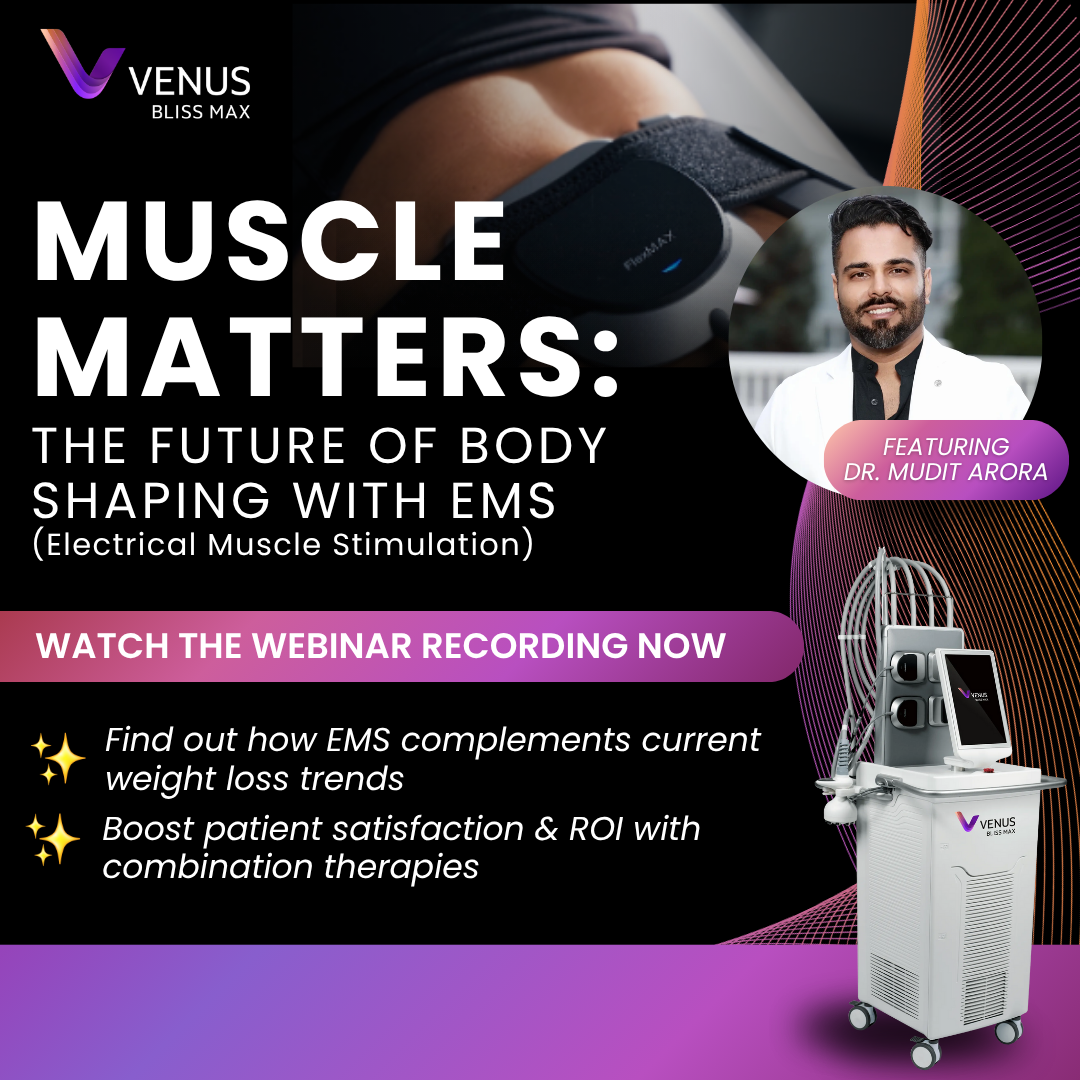Repetitive Strain Injuries: What They Are, Causes, and Cures

Repetitive strain injuries (RSIs) are a common classification of injuries that can impede a patient’s career, hobbies, quality of life, and much more. According to the most recent data from the United States Bureau of Labor Statistics , 36% of all cases of worker absence were a result of workplace-related sprains and strains and the leading type of injury in the manufacturing sector. In Canada, repetitive strain injuries are estimated to affect approximately 4.5 million people , or 15% of the country’s population, at any given time, according to data from Statistics Canada.
While time and rest can help heal these injuries, repetition of the same behaviors that caused them can make the diagnosis and intervention much more severe. Here, we outline the common causes, symptoms, and treatments for repetitive strain injuries to accurately diagnose and deliver optimal treatment outcomes to these prospective patients.
What Are Repetitive Strain Injuries and What Causes Them?
Carpal tunnel syndrome, tendonitis, and tennis elbow are just a small sampling of the long list of repetitive strain injuries. Simply put, an RSI is a traumatic injury that results from cumulative damage caused by repetitive movements. In many cases, repetition occurs over a prolonged period of time and on a regular basis. As a result, nerves, muscles, and tendons suffer micro-injuries that eventually lead to pain, numbness, weakness, and alterations in one’s posture, motor control, or movements.
To dive a little deeper, consider the RSI carpal tunnel syndrome as a result of prolonged computer work. Over time, the fine hand movements required to type and use a mouse for eight hours or more each day leads to strain and tension in the muscles and tendons located in the fingers, wrists, and forearms. This strain causes tiny tears in soft tissue and muscles, causing them to contract and limiting range of motion. Abrasion also occurs between tissue and tendons, leading to inflammation that presses on nerves, causing sensations of pain and numbness from the elbow down through the wrist and into the hands.
Generally speaking, the three basic causes of RSIs boil down to poor posture and technique in combination with overuse as a result of repetition. Careers or hobbies requiring the completion of repetitive tasks put a patient most at risk of developing an RSI, particularly if the person neglects to take regular breaks, doesn’t perform tasks in a way that best supports proper posture, or overlooks the importance of incorporating regular stretching and exercise to prevent soft tissue trauma and/or support proper soft tissue healing if trauma does occur.
The Most Common RSI Symptoms
Pain is the most common symptom of an RSI that occurs after damage has already been done, making prevention ideal. Pain may present in different degrees and may be described as local (in a defined area, such as the fingertips) or diffuse (in a larger area surrounding the injured tissue, such as the forearm). However, diagnosing an RSI can be a little tricky as it’s possible that pain may not be a presenting symptom. For those cases, and even when pain is present, the following symptoms may occur:
- Fatigue or decreased endurance (slower typing speed, for instance)
- Feeling of weakness
- Tingling, dull ache, or numbing sensation during or after the repetitive task
- Feeling of heaviness or clumsiness
- Area in question commonly feels cold
- Alterations in the way the patient moves or favoring the other side (i.e. if they use a mouse with their right hand, they may start to do other tasks more often with the left hand)
- A throbbing sensation during or after completing the repetitive tasks
- Pain in other areas of the body (may occur as a result of a shift in posture)
- Feeling of tightness and/or pain when stretching
Patients may report continuous symptoms or those that worsen the longer they complete the repetitive task causing the RSI. Specific symptoms can also range from mild to severe, though a severe case of RSI may not present all of the above-listed symptoms.
The Best Treatment Options for Repetitive Strain Injuries
For the most part, patients presenting with an RSI may recover in three to six months if proper rest is given to the damaged tissues. Without proper treatment and rest, symptoms may persist and worsen to become debilitating over time. Fortunately, certain measures can be taken that may speed up recovery time or prevent further damage, preventing more long-term complications. The following are just some of the more common ways you may treat a patient diagnosed with an RSI, in addition to some of the top advances in the treatment of soft tissue injuries.
Prescribing a Change in Tasks
If you suspect the injury has been caused as a result of repetitive duties at work or hobbies at home, suggest that the patient modify those activities to minimize repetition or, if at work, that they seek new duties from their employer for health reasons. For practicing physicians, a physician’s note to the employer may be required. If the patient is unable to avoid the activity, recommend small, frequent breaks and a set of stretches they may be able to use to improve healing and reduce pain and tension. While these small changes may assist patients in minimizing pain and offering damaged tissue the opportunity to better heal, the road to recovery may be longer and tissue may not heal properly without proper treatment.
Prescription Medications or Injections
The short-term use of anti-inflammatory medications may help to reduce inflammation and better support the healing of damaged tissue. Pain may be managed by simple pain medications like ibuprofen. Further, the injection of steroids into the affected tissue can help to minimize more severe cases of inflammation to reduce pain and better allow tissue to heal naturally. Medications may be combined with other treatments for improved outcomes and better pain management throughout treatment.
Surgical Intervention
In more extreme cases, surgery may be required. Surgical interventions are often favored for correcting more severe problems in nerves and tendons that are past the point of healing by non-surgical methods alone. In addition, surgical interventions are more common among older patients, as the body’s natural ability to repair damaged tissue can decline with age.
Physiotherapy
Physiotherapy refers to the use of exercise, stretching, or massage therapy as a means to counteract the contractions caused by an RSI and promote improved flexibility and movement as the tissue heals. Heat therapy may also be applied here to loosen tense muscles for further movement and flexibility. Through the use of traditional treatment methodologies alongside different healing technologies , physiotherapy may be used to improve posture, increase flexibility, improve strength, and otherwise restore or improve the patient’s muscle function, mobility, and quality of life.
Advanced Radio Frequency-Based Treatments
As mentioned earlier, a common myth surrounding the healing of an RSI is that with rest, the injury will heal itself. While this may be true for some, many patients also experience chronic symptoms, such as persistent pain, weakness, and a decline in function, flexibility, mobility, balance, and more. This is why the rehabilitation community continues to seek to elevate the standard of care, more recently utilizing energy-based modalities to further accelerate healing and promote optimal rehabilitation as compared to rest or traditional treatments used alone.
With its RP3 technology—a unique combination of Multi-Polar Radio Frequency (RF), Pulsed Electro Magnetic Fields (PEMF), and massage modalities— Venus Heal™ delivers synergistic benefits for addressing repetitive strain injuries and other soft tissue conditions. Venus Heal™ is an innovative non-invasive system for the treatment of acute and chronic disorders of the musculoskeletal system, such as muscle spasms, back pain, and soft tissue injuries. With this easy-to-use, compact, and portable medical device, the soft tissue injury treatments increase tissue temperature by converting RF energy to heat deep within the targeted tissue. Combined with PEMF and therapeutic massage, this results in pain relief, muscle relaxation, an increase in local blood circulation, and reduced inflammation with the possibility of noticeable pain relief in as little as one treatment session. The overall outcome is a faster, more complete recovery for your patients and a higher patient satisfaction rate for your clinic.
Interested in learning more about Venus Heal™ and the benefits of a Venus Concept partnership for your business? Contact an expert today using the button below.







